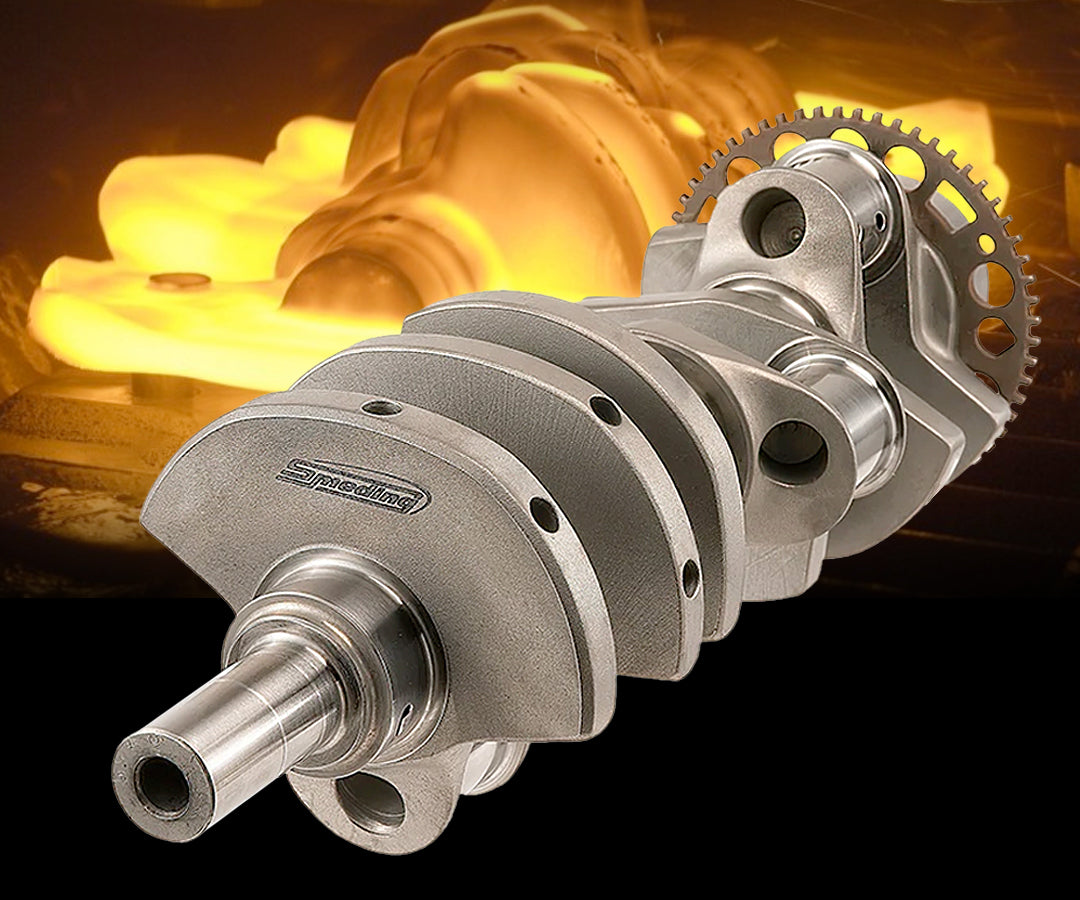
Jan 15 , 2024
Forged Steel vs. Cast Iron/Steel Crankshafts
A common misconception in the engine industry is that iron & steel are the same…however this is far from true. In this article we will cover and explain the differences between a high quality Forged Steel crankshaft vs an inferior Cast Iron/Steel crankshaft.
By definition iron is a ductile metal with the atomic number 26. Steel on the other hand is a ferrous alloy consisting primarily of iron and carbon. Whenever iron is blended with any other element or compound it becomes an alloy, and because it is an alloy it can now be classified as ‘Steel’.
When a crankshaft is produced by casting, a liquid alloy is poured into a mold and then cools to take shape. This is an inexpensive manufacturing process that results in the final product not having uniform or strong grain flow through the crankshaft. Cast steel crankshaft have a tensile rating of 65,000-100,000psi depending on the alloy used and will fatigue and flex at mild levels.
When a Smeding crankshaft is created through forging, a 4340 steel alloy billet is heated and then pressed into shape. This results in a crankshaft with very uniform and strong grain flow with a tensile rating of 140,000-150,000psi. This manufacturing process is about three times as expensive; however, it results in a much higher quality product for the end user. After forging the crankshaft is shot peened to decrease surface stresses, heat treated to further increase tensile strength, and finally nitrided to prevent surface wear.
This is standard with all Smeding custom crate engines and crankshafts. We do not believe in selling an inferior product, and only use the best quality parts available.

